#roman scotland
Text


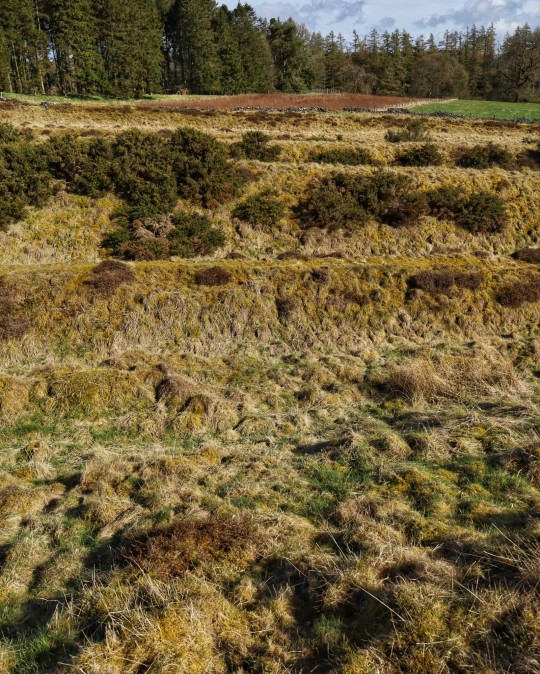


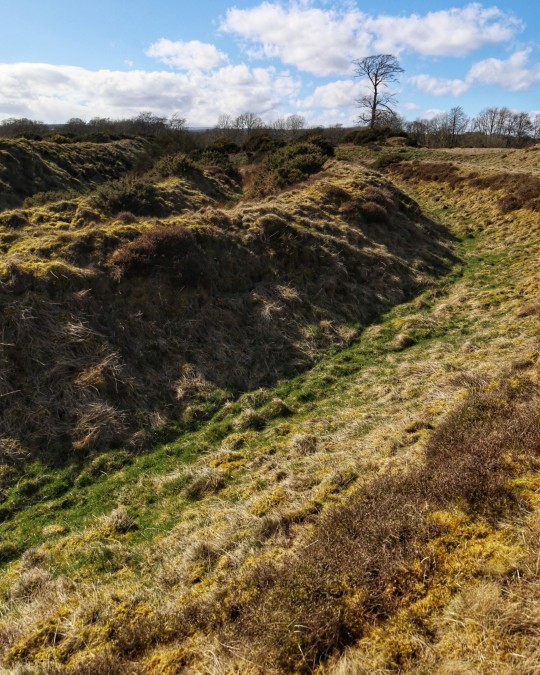

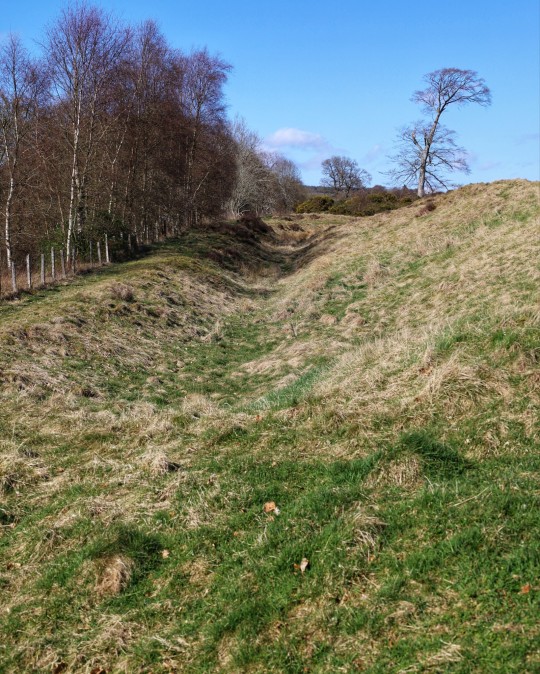


Ardoch Multivallate Roman Fort, nr. Perth, Scotland
#earthworks#landscape#roman#roman fort#roman army#roman soldiers#roman defence#roman building#romans#roman empire#roman scotland#archaeology#relic#defence#outdoors#wild places#Scotland
41 notes
·
View notes
Text
Today's Hidden Gem
Taking a wander through the National Museum today, I nearly walked past this cute lil' carving of an Ox!
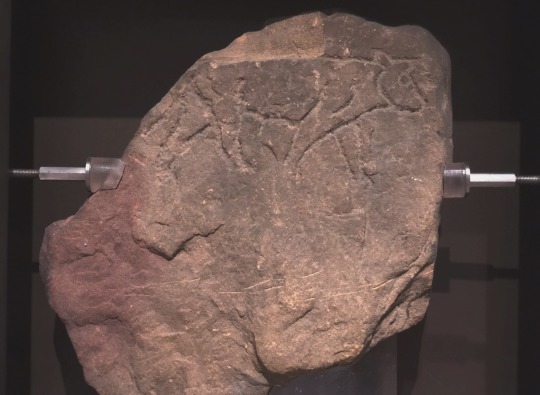
This wee beauty hails from East Lomond Hill, and dates to c.AD 500-800. Carved into (I believe) a rough block of sandstone is the ox, with clearly defined leg muscles, ears and tail!


Oxen were domesticated and utilised by farmers to move heavy loads and plough fields.
#national museum of scotland#national museums scotland#scottish youtuber#ancient history#archaeology#archaeogaming#youtube#chaotic academia#scottish archaeology#scottish history#archaeolorhi#ancient farming#oxen#animal carving#celtic art#roman art#roman britain#roman scotland#celtic britain#celtic scotland#celts#celtic#dark academia#celtic carving#scottish prehistory#scottish art#ox carving#ox painting
94 notes
·
View notes
Text
Roman Scotland

There are surprisingly many traces of the short period the Romans got north of Hadrian's wall.

Many of the roads in the borders have the straight up and down pattern of Roman roads.




3 notes
·
View notes
Text
What an ill-fated venture that was, trying to conquer the Picts.
4 notes
·
View notes
Text


~ Shoes.
Culture: Romano-British
Place of origin: Roman site of Newstead (Trimontium), Roxburghshire, Scotland, Northern Europe
Medium: Leather; thistle-shaped tab at the back
#ancient#ancient art#history#museum#archeology#ancient history#archaeology#roman#shoes#leather#romano British#Trimontium#scotland
1K notes
·
View notes
Text

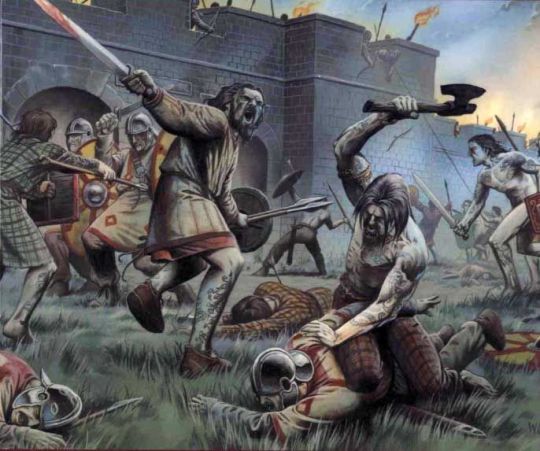

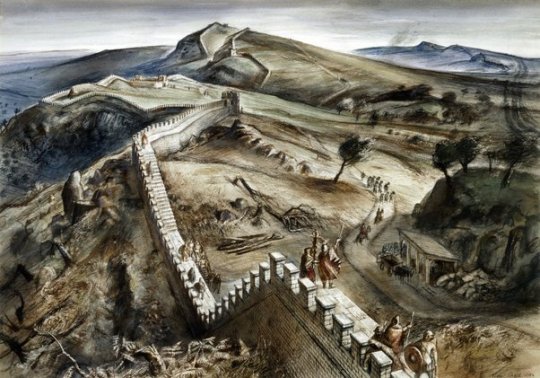
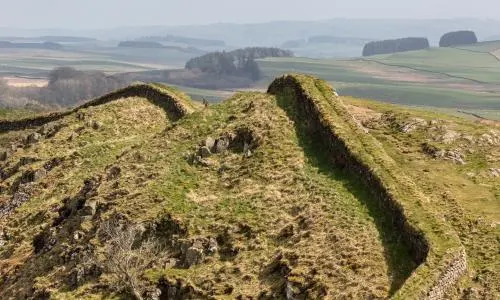
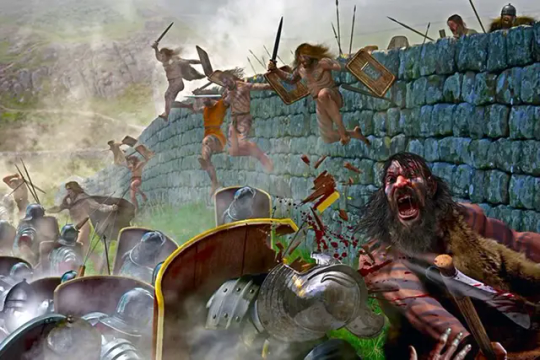


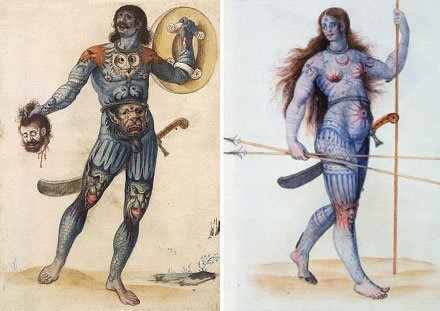
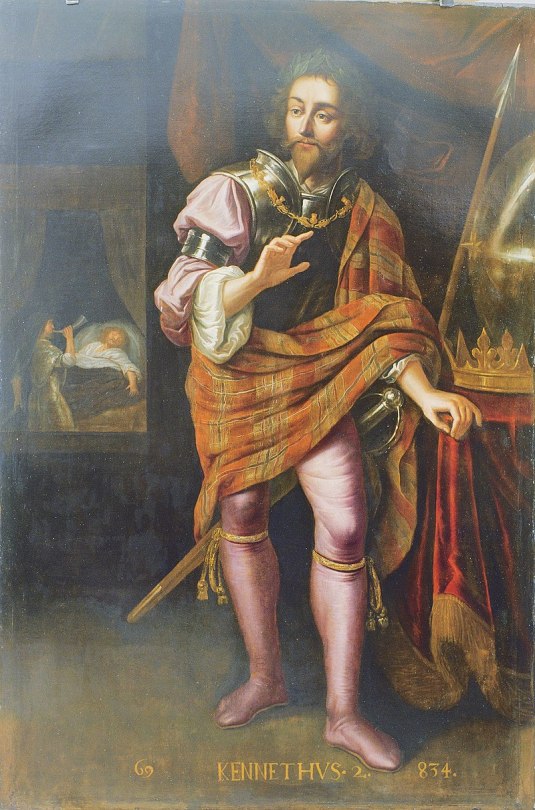
January 24th, 76AD, is said to be the likely date of birth forPublius Aelius Hadrianus, who built Hadrian’s Wall.
When the Romans invaded the British Isles they held, large parts of what is now Scotland, even after the construction of Hadrian’s Wall in AD 122, there were large forts around the country at varioustimes, the largest of which was Trimontium located at Newstead, near Melrose, in the Scottish Borders. It was occupied intermittently from about 79 to 184 AD and was the largest of the "outpost" forts after the construction of Hadrian's Wall
Hadrian’s Wall was largely abandoned for about twenty years from .AD 138, when the Romans established a new frontier in Scotland between what are now the Firths of Forth and Clyde, where they built the Antonine Wall.
The Antonine Wall was more of a very large ditch, and my old flat would have been part of the structure, part of the "wall" is on land only yards from me. I got into trouble for calling it a ditch from a Roman historian before, so will add that it was much more, the thing is it more or less looks like one just now, much of the fortifications are long gone.
Hadrian is noted for his interest in architecture and the number of provinces he visited whilst Emperor. He is likely to have visited Britain in AD 122, after some kind of conflict in the preceding years, and we know that it was in this period that construction of the Wall started. It has also been known as Picts' Wall, or Vallum Hadriani in Latin.
The origin of the Picts is clouded by the many fables and legends about them. There are numerous theories as to who the Picts were and where they came from. Experts even disagree over what they ate and drank and what language they spoke although some point to the existence of a distinct Pictish language, which today is believed to have been an Insular Celtic language, closely related to the Brittonic spoken by the Britons who lived to the south.
Often described as savages the Picts were an ancient and artistic people who defied the might of Rome which conquered the rest of Britain. They were a sophisticated , hardworking, clever people, skilled in farming and fishing.
You would have thought a savage tribe would have been an easy conquest for the Romans, but the Picts were anything but that. Picts are first recorded in history in the third century AD. Eumenius, a Roman writer, describes the "pictus" as fierce and skilled in battle. It is not clear whether "pictus" (the Latin for painted) was intended, or if this is a Latin form of some indigenous name. I prefer to think of them as the "Painted People"
Although the Romans reached Scotland and often defeated them in battle, they never conquered the Picts or Pictland. The Roman Empire's expeditions north resulted in few permanent gains.
Scotland's sculptured stones, created by the Picts of ancient Alba tell the stories of a race of people who defied Rome and survived the invading Vikings, thus preserving a separate culture and race in Scotland. It is in these sometimes mighty, sometimes delicate stones that the history of ancient Scotland is now recorded.
There are many of these slabs on display in The National Museum of Scotland in Edinburgh, as well as a fine display in The Hunterian in Glasgow.
When the Romans left the Picts were often attacked by the Britons and eventually all the Pictish tribes agreed to support one High King who would rule all of Pictland.
It's said the Picts, unusually, were a matrilineal society, i.e. bloodlines passed through the mother. Pictish kings were not succeeded by their sons, but by brothers, nephews or cousins as traced by the female line in a complicated series of intermarriages between 7 royal houses. It is this rare form of succession which in 845 AD gave the crown of Alba and the title Rex Pictorum - King of the Picts - to the son of a Pictish princess by the name of Kenneth, Son of Alpin, he is generally accepted by most historians as the first of the kings of Scotland, follwing on from his reign as King of Dál Riata. As usual though, not al agree on this.
The Picts survived as a distinct people until early in the 10th century. However, there is no record of them dying out or moving elsewhere. It is most likely that the Picts simply integrated into the large population within the developing multi-ethnic nation of Scotti, Picts, Celts, Britons and Angles which we now call Scotland. The map, from wiki says this was how their lands looked as late as the 7th century. The last pics are of two Pictish people and a 15th century depiction of King Kenneth.
173 notes
·
View notes
Text

A hoard of Roman nails found at Inchtuthil, Perth and Kinross, Scotland, circa 87 AD. After the Roman army abandoned their forward fortification on the site they buried 875,400 iron nails on the site to prevent the enemy Caledonian tribes reforging the iron for weapons.
606 notes
·
View notes
Text
Trimontium Roman Fort
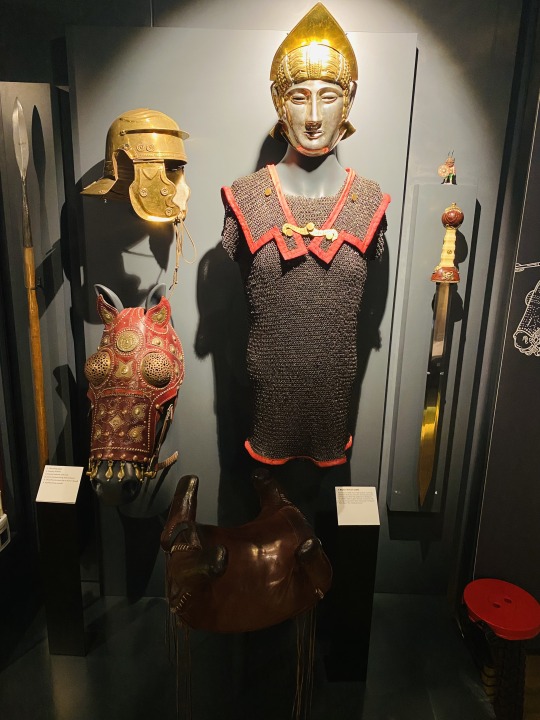
A departure from the Early Modern period to do a thread about the Roman fort of Trimontium in what is now the Scottish borders. I visited the museum at the weekend, and it was great! 1/14
Trimontium, now called Newstead, was first built about around 80 AD, during the Roman General Agricola’s invasion of Caledonia. It stood for over a century in an area known as Trimontium – between three hills.
The land had been occupied by native tribes since at least the Iron Age, with multiple settlements existing on the slopes surrounding the fort.
It served as a military base in Caledonia, and seems to have primarily been a cavalry depot for long periods – there are lots of horse remains, as well as these helmets and ceremonial faceplates belonging to Roman cavalrymen.


The XX Legion spent time there (as did the VIII, earlier on), as evidenced by the remains of this plaque.

A Roman soldier’s service record!

The fort’s strategic function shifted over time –it was a bulwark existing beyond Hadrian’s Wall, then after the construction of the Antonine Wall further north it became more of a logistical hub, then resumed being a frontier fort after the Antonine Wall’s abandonment.


Small settlements sprung up around the fort’s walls, and it is likely there were regular peaceful contact with the surrounding tribes. However there is also evidence of conflict. Roman forts came under sustained attack across several periods, and it looks as though when the fort was finally abandoned, it was done so in a hurry.

As per soldiers from the Ancient World to modern-day Iraq and Afghanistan, when the troops move out they leave a lot behind – lucky for the archaeologists and historians.
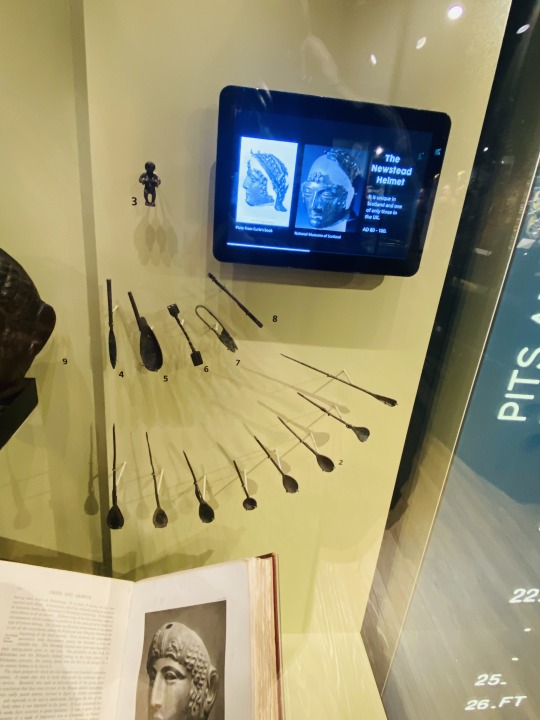
I am amused by how miserable Roman soldiers must have been after getting assigned to northern Britain. The ends of the earth indeed! I also do scoff at the whole “I think about Rome every day” meme, but I can see the allure, and I find it extremely interesting comparing and contrasting what I know about 18th c. militaries with the Roman Army. There were definitely a fair few things that I think the Romans were better at, especially when it comes to organisation, logistics and efficiencies!

#history#military history#roman history#scottish history#scotland#scottish#rome#roman#roman empire#ancient history#classics#classical history
52 notes
·
View notes
Text
i think about names and name meanings a lot and sometimes i think about the fact that the roy siblings, especially the younger three, are often referred to as or associated symbolically with dogs and the fact that connor is a name meaning "lover of hounds".
#connor roy#succession#he loves them :(#also almost all of them have gaelic names i think that's fun and interesting#and while roman obviously is not gaelic it still has ties to the history of the uk/scotland bc they were at one point occupied by rome#i like names they're interesting :)
218 notes
·
View notes
Text
I've never actually been to Rome. My father has, though, when he was...eight? My grandfather was a devout Catholic, and wanted his family to see the Pope. My grandmother was not a devout Catholic, only a devout auditor, and in the middle of St. Peter's Basilica started asking pointed questions about the Catholic church's finances, while my grandfather begged her to please wait till they were off consecrated ground.
At some point, they realized their son was missing.
Catholic sermons are not very interesting for eight-year-olds, so my father had wandered off and hopped on a tour bus. He ended up in Pompeii and it was "pretty cool," before the tour group realized they'd acquired an extra child.
#fortunately it's not hard to locate a giant basilica and a panicking lebanese couple#he still does this. last time he drove from london to scotland without a map to 'check out a radio'#'it's not hard. you just keep going north'#about jlrrt#jlrrt speaks#just roman memes
51 notes
·
View notes
Text
National Museums Scotland has just announced the extraordinary reconstruction of an 1,800-year-old Roman arm guard. The artifact has been described as “absolutely amazing.”
However, since its initial discovery within the Scottish Borders in 1906, the armor, shattered into over 100 pieces, languished in relative obscurity until experts meticulously reassembled it, much like a jigsaw puzzle.
This brass relic likely adorned a high-ranking Roman soldier, gleaming like gold on his arm. Currently on loan to the British Museum, you can find it at the upcoming exhibition "Legion: Life in the Roman Army" starting February 1, 2024!
#armor#Romans#Scottish Borders#Britannia#Scotland#Roman Military & Warfare#Roman Technology#ancient#history#ancient origins
38 notes
·
View notes
Text
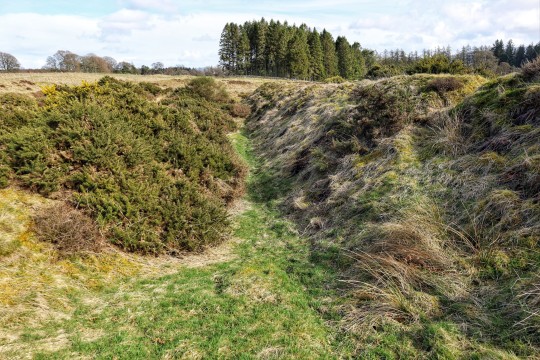
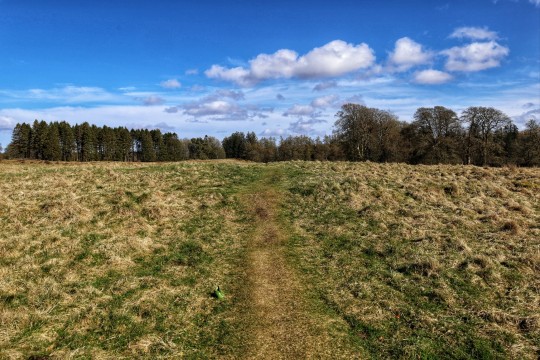






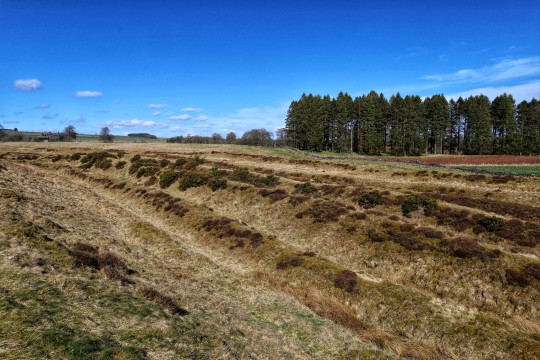
Ardoch Multivallate Roman Fort, nr. Perth, Scotland
#roman#roman fort#roman army#roman soldiers#roman building#romans#roman living#roman empire#roman culture#roman scotland#archaeology#vallum#earthworks#ancient sites#ancient history#Scotland#ardoch roman fort
31 notes
·
View notes
Text
The Deskford Carnyx
NEW VIDEO ALERT!

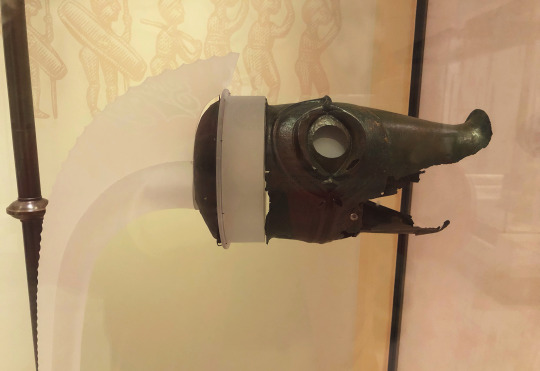
Tumblr let me introduce to you, the Deskford Carnyx! A celtic war trumpet from Scotland!
This has been one of my favourite artefacts in the National Museum of Scotland for years now (I wrote a CRINGE report on it in 2nd year) so I'd love to share it with you all!
Click the link below to see the full video, out now!!
youtube
Tumblr will probs bury this due to the YouTube link but here have some extra pics of mine, of the carnyx and its reconstruction in their wee home x


Don't forget to follow, like and subscribe for more Archaeolorhi!!! x
#scottish youtuber#scottish streamer#scottish history#scottish archaeology#iron age scotland#roman scotland#roman iron age scotland#celtic scotland#chaotic academia#archaeology#ancient history#archaeogaming#youtube#archaeolorhi#celtic britain#celtic europe#celtic art#celtic music#celtic instrument#dark academia#scotland#national musuem of scotland#roman britain#iron age europe#deskford carnyx#carnyx#war trumpet#Youtube
8 notes
·
View notes
Text


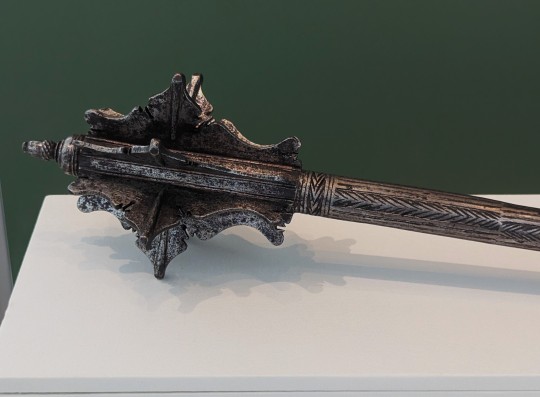
Flanged Maces from Germany dated to the 16th Century on display at the National Museum of Scotland in Edinburgh, Scotland
Photographs taken by myself 2022
#military history#renaissance#german#germany#holy roman empire#hapsburgs#16th century#art#national museum of scotland#edinburgh#barbucomedie
7 notes
·
View notes
Text
Such an interesting article on deciphering one large Roman silver hoard, and how the deciphering has changed since its discovery in 1919.

4 notes
·
View notes
Text
This is supposed to be a lighthearted internet activity so don’t take it too seriously ^-^
#hetalia#riva.txt#aph germany#aph russia#aph canada#aph cuba#aph america#aph greece#aph scotland#aph turkey#aph australia#aph roman empire
69 notes
·
View notes